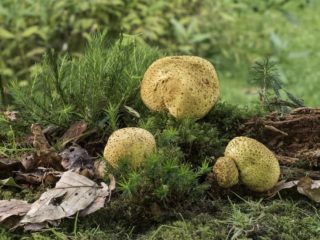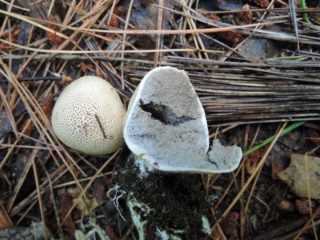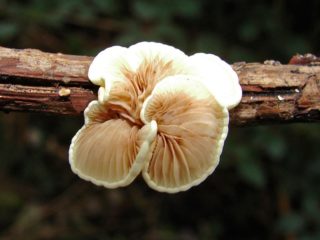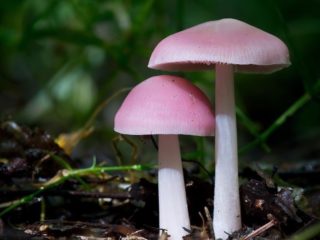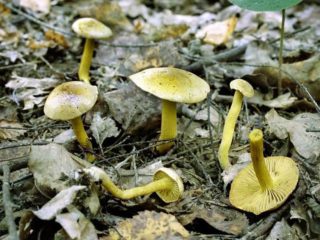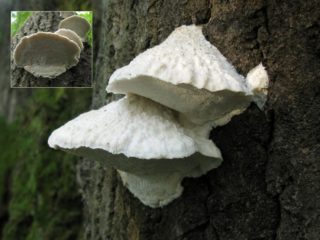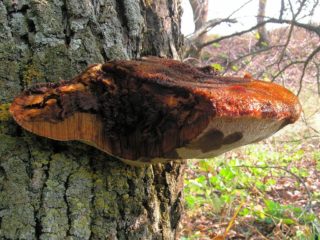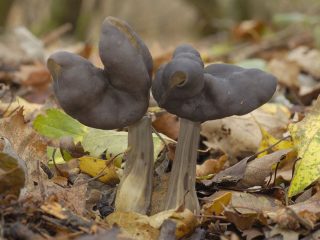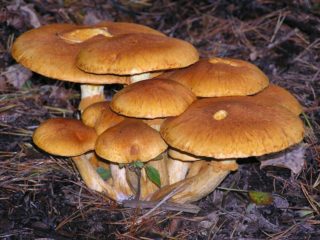Content
Warty pseudo-raincoat is a common fungus that is a member of the Scleroderma family. It belongs to the group of gasteromycetes, therefore, its fruit body retains a closed shape until the spores that form inside are fully ripe. In reference books, it can be found under the name Scleroderma verrucosum.
What do warty pseudo-raincoats look like?
This mushroom is distinguished by a strongly thickened upper part, and in general, the fruit body has a tuberous shape. Its surface is rough to the touch, as it is covered with completely convex scales. The warty pseudo-raincoat does not have a pronounced cap and legs, they are a single whole.
The upper shell (or peridium) of this species is coarse olive-colored cork. The diameter in the section can be 2-8 cm, and the height reaches up to 7 cm. The mushroom is attached to the ground using a folded pseudopod with grooves, from which mycelial strands extend in different directions. In some cases, the bottom of the fungus may be completely buried in the soil. When ripe, the upper surface loses its scales and becomes smooth, after which it cracks.
In young specimens, the flesh is dense, light in color with yellow veins. As it grows older, it acquires a gray tint, and then blackens and becomes loose.
The spores of this species are large spherical, their size is 8-12 microns. Ripening of spore powder begins from the top of the fruiting body. After that, the pulp turns black and gives off an unpleasant metallic odor. This fungus does not have a sterile base under the glea.
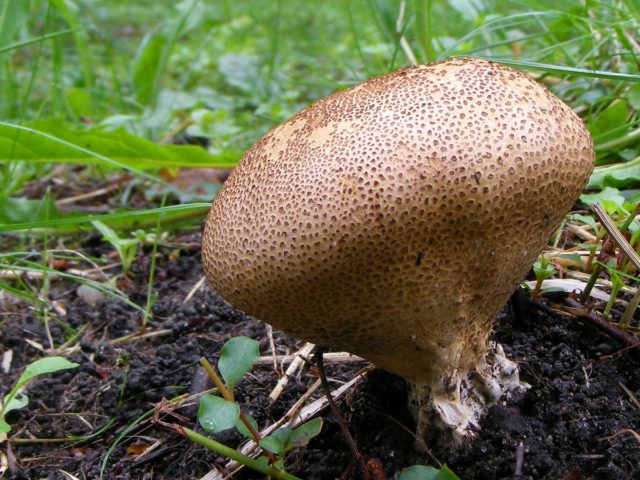
This representative is similar in appearance to a raincoat, and in terms of interior - to a truffle.
Where do warty pseudo-raincoats grow
This mushroom is found everywhere. In most cases, it grows in groups, rarely singly. Prefers sandy soils rich in organic matter, with an increased level of acidity and rotten wood. Initially, warty pseudo-raincoat grows deep in the soil like a truffle, but as it grows, it always comes to the surface.
He prefers open areas of the forest, well-lit forest edges. Therefore, the common places of its growth are:
- fields;
- meadows;
- the edges of the ditches;
- pastures;
- felling;
- places along the roads.
The fruiting season of the warty pseudo-raincoat begins in August and lasts until the end of October, if weather conditions permit. He is able to endure drought for a long period.
This species forms mycorrhiza with shrubs and hard tree species such as oak, beech.
Is it possible to eat warty pseudo-raincoats
This mushroom is classified as inedible. But at the same time it is characterized by low toxicity, so it can be used in small doses as a spice.Consumption in large quantities causes food poisoning, which is accompanied by dizziness, nausea, and vomiting.
Signs of intoxication appear after 1-3 hours. In this case, you need to call an ambulance. Before the arrival of the doctor, you should rinse the stomach and drink activated charcoal at the rate of one tablet per 10 kg of body weight.
Conclusion
The warty pseudo-raincoat is not of interest to mushroom pickers, as it is inedible. In order to avoid a mistake during collection and procurement, it is worthwhile to study the characteristic differences of the species in advance.
